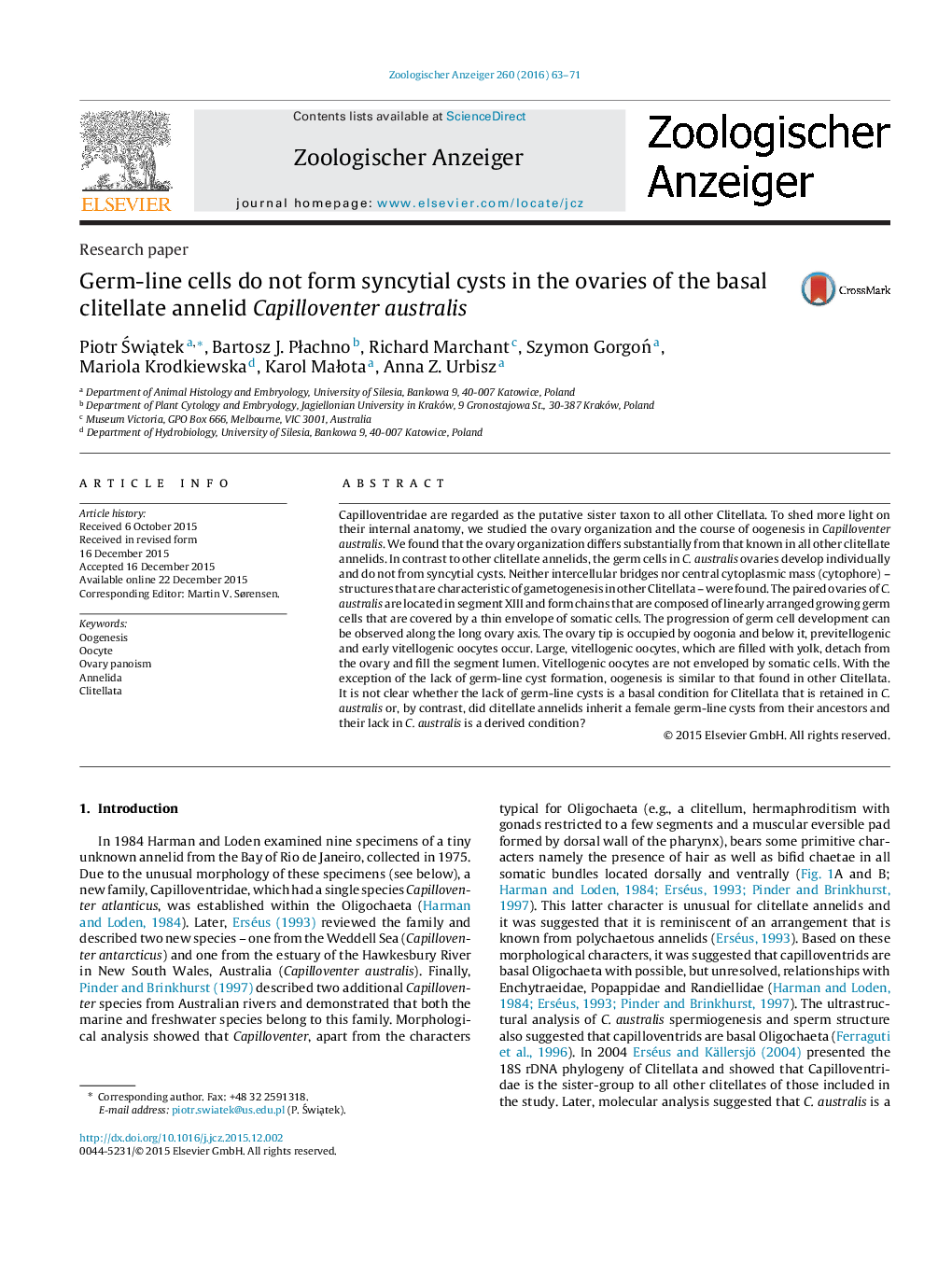| Article ID | Journal | Published Year | Pages | File Type |
|---|---|---|---|---|
| 2790478 | Zoologischer Anzeiger - A Journal of Comparative Zoology | 2016 | 9 Pages |
Abstract
Capilloventridae are regarded as the putative sister taxon to all other Clitellata. To shed more light on their internal anatomy, we studied the ovary organization and the course of oogenesis in Capilloventer australis. We found that the ovary organization differs substantially from that known in all other clitellate annelids. In contrast to other clitellate annelids, the germ cells in C. australis ovaries develop individually and do not from syncytial cysts. Neither intercellular bridges nor central cytoplasmic mass (cytophore) - structures that are characteristic of gametogenesis in other Clitellata - were found. The paired ovaries of C. australis are located in segment XIII and form chains that are composed of linearly arranged growing germ cells that are covered by a thin envelope of somatic cells. The progression of germ cell development can be observed along the long ovary axis. The ovary tip is occupied by oogonia and below it, previtellogenic and early vitellogenic oocytes occur. Large, vitellogenic oocytes, which are filled with yolk, detach from the ovary and fill the segment lumen. Vitellogenic oocytes are not enveloped by somatic cells. With the exception of the lack of germ-line cyst formation, oogenesis is similar to that found in other Clitellata. It is not clear whether the lack of germ-line cysts is a basal condition for Clitellata that is retained in C. australis or, by contrast, did clitellate annelids inherit a female germ-line cysts from their ancestors and their lack in C. australis is a derived condition?
Keywords
Related Topics
Life Sciences
Agricultural and Biological Sciences
Animal Science and Zoology
Authors
Piotr ÅwiÄ
tek, Bartosz J. PÅachno, Richard Marchant, Szymon GorgoÅ, Mariola Krodkiewska, Karol MaÅota, Anna Z. Urbisz,
